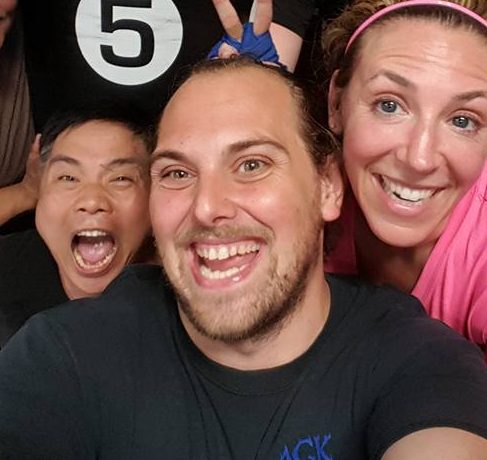Black Belt Strategies for Real-World Goals
At Vision Martial Arts in Patchogue, we blend the ancient discipline of martial arts with modern psychological insights to teach more than just self-defense—we equip our students with life skills. Goal-setting, a critical component of personal and professional development, is deeply integrated into our training philosophy. This article delves into how the structured environment of martial arts provides a perfect scaffold for developing robust goal-setting techniques that benefit all areas of life.
The Framework of Goal-Setting in Martial Arts
In martial arts, the journey from novice to master is framed through a series of well-defined, progressive goals, making it an ideal model for understanding structured goal-setting. At the highest level, the goal might be to achieve mastery or to earn a black sash, representing a profound understanding and ability in the art. This lofty goal is then broken down into mid-level goals, typically marked by belt ranks that transition a student from beginner to intermediate, and eventually to advanced levels.
Each belt rank encompasses a set of specific, short-term goals that need to be achieved to progress. For instance, moving from a white to a yellow belt might involve mastering basic stances, kicks, and blocks—each of these being a mini-goal within the larger framework. These short-term goals are further distilled into immediate action items that students can focus on in each class or training session. For example, a student might aim to learn the next sequence in a form or improve a particular kick through repeated practice. This structured approach teaches students not just to aim for the end goal but to value and work through the incremental steps necessary to get there.
Reverse Engineering Mastery
Reverse engineering in martial arts involves starting with the ultimate goal in mind and methodically breaking it down into achievable steps. A martial artist who aspires to mastery begins by visualizing the end state—perhaps performing with precision at a black belt level. This vision is then dissected into what it takes to get there: advancing through various belt ranks, each with its own set of skills and requirements.
Let’s parallel this with a real-world example of reverse engineering a goal like becoming a millionaire. This ultimate financial goal can seem daunting when viewed as a single objective. However, when broken down through reverse engineering, it becomes more manageable:
- High-level goal: Become a millionaire.
- Mid-level goals: Establish a lucrative career, start a profitable business.
- Short-term goals: Obtain a college degree in a high-demand field, gain industry-specific skills, save a certain amount each month.
- Immediate action items: Enroll in relevant courses, read books on personal finance, research market trends, study for upcoming exams.
Just as a martial arts student doesn’t immediately become a black belt but progresses through various stages of competency, an individual aiming to become a millionaire must first focus on immediate and actionable steps like excelling in school or learning about investments. This approach not only makes the goal seem more attainable but also outlines a clear path of incremental steps that lead to the ultimate objective.
By integrating these principles, both in martial arts and in personal ambitions, individuals learn to appreciate each phase of their development, recognizing that each step—no matter how small—is critical to the overarching goal. This methodology not only fosters a sense of achievement but also builds a robust framework for personal discipline and success.
Setting SMART Goals on the Mat
SMART goals—an acronym for Specific, Measurable, Achievable, Relevant, and Time-bound—provide a powerful formula to frame objectives within martial arts training, making goals clear and reachable. Each component of the SMART criteria serves to fine-tune the goal-setting process, ensuring that each goal set can effectively contribute to the overarching aim of martial arts mastery.
- Specific: Goals should be clear and specific to avoid confusion and to focus effort. In martial arts, a vague goal might be “get better at kung fu,” which lacks clarity. A specific goal, however, would be “master the first 10 moves of the Tai Chi form.” This precision outlines exactly what is expected and helps focus training sessions.
- Measurable: A goal must have criteria for measuring progress. If you can’t measure it, you can’t manage it. In martial arts, a measurable goal could be “increase the number of high kicks I can perform in a row from 10 to 20.” This allows for tangible tracking of improvement and provides motivation as incremental gains are observed.
- Achievable: While goals should be challenging, they must also be attainable. An unachievable goal only sets the student up for failure. For instance, aiming to jump from a white belt to a black belt in one year is unrealistic for most. Instead, aiming to achieve the next belt level within the prescribed time frame of the training curriculum is more feasible.
- Relevant: The goals must matter to the individual and align with broader objectives. A relevant goal in martial arts might focus on improving techniques that are essential for upcoming competitions, rather than perfecting a rare move that is seldom used in practice or matches.
- Time-bound: Every goal needs a target date, which creates a sense of urgency and prompts action. A goal without a timeline is merely a wish. In the context of martial arts, setting a goal to “learn the complete form of Chen-style Tai Chi by the end of the quarter” imposes a deadline that helps structure practice sessions and prioritizes time management.
Incremental Progress: The Key to Long-Term Success
Achieving mastery in martial arts—or any discipline—relies heavily on recognizing and appreciating incremental progress. This concept is deeply embedded in the journey through martial arts, where each training session builds upon the last, and every small improvement contributes to overall growth.
- Consistent Effort: Small, consistent actions tend to accumulate into significant achievements. For martial artists, this might mean dedicating fifteen minutes daily to refining a specific stance or technique. Over weeks and months, these minutes add up to substantial improvements.
- Feedback and Adjustment: Regular feedback, whether from self-assessment or instructor evaluations, helps in recognizing progress and areas needing improvement. For instance, video recording practice sessions can provide visual feedback that might highlight a need to adjust a kick’s form or the execution speed of a strike.
- Celebrating Small Wins: Recognizing and celebrating small achievements can boost motivation and encourage persistence. For martial arts students, celebrating the successful performance of a complex combination during sparring can reinforce positive behavior and increase confidence.
Incremental progress, supported by SMART goals, ensures that each step taken is purposeful and measured, steering students steadily towards their ultimate objectives in martial arts and life. This methodical approach not only enhances skill development on the mat but also ingrains a mindset that is valuable in all aspects of personal and professional growth.
Applying Martial Arts Lessons to Real-World Goals
The journey through martial arts is not just about physical and mental development within the confines of a martial arts school; it’s a powerful metaphor for personal growth in all areas of life. Each stage in martial arts training—from mastering basic stances to achieving black belt and beyond—mirrors the stages we encounter when pursuing real-world goals. These stages provide a structured approach that can be translated into effective strategies for achieving personal and professional objectives.
- Initial Learning and Adaptation: Just as a new martial arts student learns the basic forms and etiquettes, any new endeavor requires acquiring foundational knowledge. Whether it’s starting a new job, learning a language, or adopting a fitness routine, the beginning is about understanding the basics and integrating into the new environment.
- Progressive Skill Development: In martial arts, students progress through various belt levels, each representing a higher skill set and deeper understanding of the discipline. Similarly, real-world goals require us to level up our skills progressively. For instance, a budding entrepreneur might start with understanding small business laws and eventually learn about international trade regulations.
- Mastery and Refinement: Achieving a black belt is not the end but a stage of ongoing refinement and mastery. This stage in real life could be seen in a professional continually refining their skills and staying updated with the latest in their field, striving not just to maintain their level but to excel.
Beyond the Mats: Life Lessons from Martial Arts
The principles and disciplines learned in martial arts extend far beyond physical training; they embed life lessons that influence one’s approach to personal and professional challenges:
- Resilience: Martial arts teach resilience through repeated practice and sometimes, failure. This resilience helps in the real world when facing setbacks in personal goals or career aspirations, teaching us to get back up and try again, often with a refined strategy.
- Focus and Discipline: The intense focus required to master a martial arts technique is applicable in everyday life. This skill enhances one’s ability to concentrate on work tasks, study for exams, or commit to personal projects with a disciplined approach.
- Respect and Humility: Martial arts place a strong emphasis on respect for the instructor, fellow students, and the art itself. This teaches practitioners to approach real-world interactions with humility and respect, values that are essential in maintaining healthy personal and professional relationships.
The Role of the Martial Arts Community in Personal Growth
The community within a martial arts school plays a critical role in individual development, offering support, motivation, and accountability. This sense of community can be paralleled in real-world settings:
- Support Networks: Just as martial arts students rely on their peers and instructors for encouragement and guidance, building a supportive network in one’s personal and professional life can provide the emotional and logistical support needed to achieve goals.
- Shared Learning: In a martial arts school, learning occurs not just through direct instruction but also through observing and interacting with others. Similarly, in the workplace or in personal pursuits, being part of a community or team allows for shared learning and growth, enhancing everyone’s capacity to achieve their goals.
- Accountability: Martial arts training often involves preparing for tests or competitions, where the community holds each member accountable. Similarly, having a mentor, coach, or accountability partner in real-life endeavors can ensure continuous progress and commitment to goals.
Integrating the structured approach of martial arts training into real-world goal-setting not only provides a proven framework for success but also enhances the journey with rich life lessons and community support. This holistic development ensures that individuals are not only successful in achieving their goals but are also evolving into well-rounded personalities capable of handling various life challenges.
Conclusion
Martial arts training at Vision Martial Arts in Patchogue offers more than physical fitness and self-defense skills; it provides a comprehensive framework for personal development through goal-setting and incremental achievements. The lessons learned on the mat are applicable to the challenges faced in everyday life, offering a path to personal independence and success. Embracing the discipline and structure of martial arts can lead to profound personal transformations, equipping individuals with the tools to achieve their highest potential.
This rich integration of martial arts principles and goal-setting techniques not only enhances the training experience but also prepares students for the complexities of life, ensuring they are well-equipped to set, pursue, and achieve their goals, both on and off the mat.
To start YOUR martial arts journey, click the button below to schedule your first class in one of our trial programs:
Vision Martial Arts
218 Medford Ave
Patchogue, NY 11772
631-707-5610

Author: Michael A Evans
Michael’s journey in martial arts began in 1985, and he now proudly holds a 6th-degree black sash, mentored by Moises Arocho. As the founder of Vision Martial Arts in Patchogue, NY, he not only offers robust martial arts training for adults but is also deeply committed to childhood development. Through martial arts and various movement techniques, he empowers kids and adults to realize their potential and shine. Beyond the martial world, Michael wears the hat of an editor for both Forgotten Skillz and Onward Science, and collaborates on the enchanting “Little Laurie Science Stories” book series and the Ninja Née Science Education Program. Educated at the NY College of Health Professions, he brings therapeutic relief to many as the lead massage therapist at Massage LI.


















